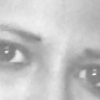Hindu art is the art and architecture of India. This is not reserved to a particular religion rather the name Hindu would mean people of Hindustan. Both the words Hindu and Hindustan originated from the River Indus that flows through northern part of India. The religion and culture of India are inseparable and so the gods and their reincarnations, flowers and other related pictures appear in the paintings, music and dance of India called as Hindu art.
There are some traditional Hindu arts such as singing, dancing, painting, instrumental music, vocal music, floral designs or kolams on the floor, personal grooming, mantras, and garlands of flowers, sewing, stitching, magic and illusions, costume decorations, embroidery, playing musical instruments like veena and mrithangam, games, riddles, drama, literature, storytelling, ornamental works, carpentry, sculptures, hairdressing, mehandi application, gardening and horticulture, games of dice, etc. The various forms of Hindu art are called as vadya, nritya, alekhya, tandula, pushpastarana, viseshakacchedya, manibhumikakarma, aindra jala, kaucumara, suggndha yukthi, nepathya yoga, balaka kridanaka, etc.
The Hindu art reflects the holistic view of the art forms of India. There are many sensuous themes in the Indian temples. There is no single founder or prophet in Hindu religion and the symbols of fertility are displayed in every art form. They follow the four goals of life. Each human being is expected to adhere to these four goals. They are dharma, artha, kama and moksha. Dharma refers to righteous living. One should not live as he wishes but rather stick to the noble principles of dharma. Artha gives a meaning to life. It is the life of wealth that is acquired through the right means. One should earn for his living and take up the right profession and may live a life of luxury. Kama is connected to the emotional feeling and sexual life. Each human being can fulfill this in the right manner. The final position that every soul should aim at is moksha or spiritual salvation. All the Hindu art forms are focused on these goals of life.
The temple and sculpture art of Hindustan started from the time of Harappans and the rock cut caves could be seen in various places like Badami, Aihole, Elephanta, Aurangabad, Salsette, Ellora and Mamallapuram. The rock paintings in the caves are seen in Ajanta caves, Bagh, Ellora caves and Sittanavasal. The miniature paintings of the Mughal period are derived from the Persian miniature tradition. Other Hindu arts are Kangra paintings, Company paintings and Rajput paintings.
The contemporary Hindu art are Tanjore paintings and other forms of paintings of the Hindu deities. The deities are portrayed with extra limbs to show their power, each of the limbs in different position. The lotus flower is seen in many Hindu arts as this is a depiction of purity, fertility and beauty. Many rich and interesting buildings and temples are produced by the Hindu architects. The goddesses in these temples had a graceful figure with full breasts. The Hindu art forms are also displayed through the Hindu deities. For example dancing is a Hindu art and Lord Shiva is often portrayed as the Lord of Dance. The Hindu art is a reflection of Indian culture and tradition.
Article Source :
http://www.veethi.com/articles/hindu-art-article-404.htm
Keywords :
HINDU ART
,
indian art
,
hindustan art



